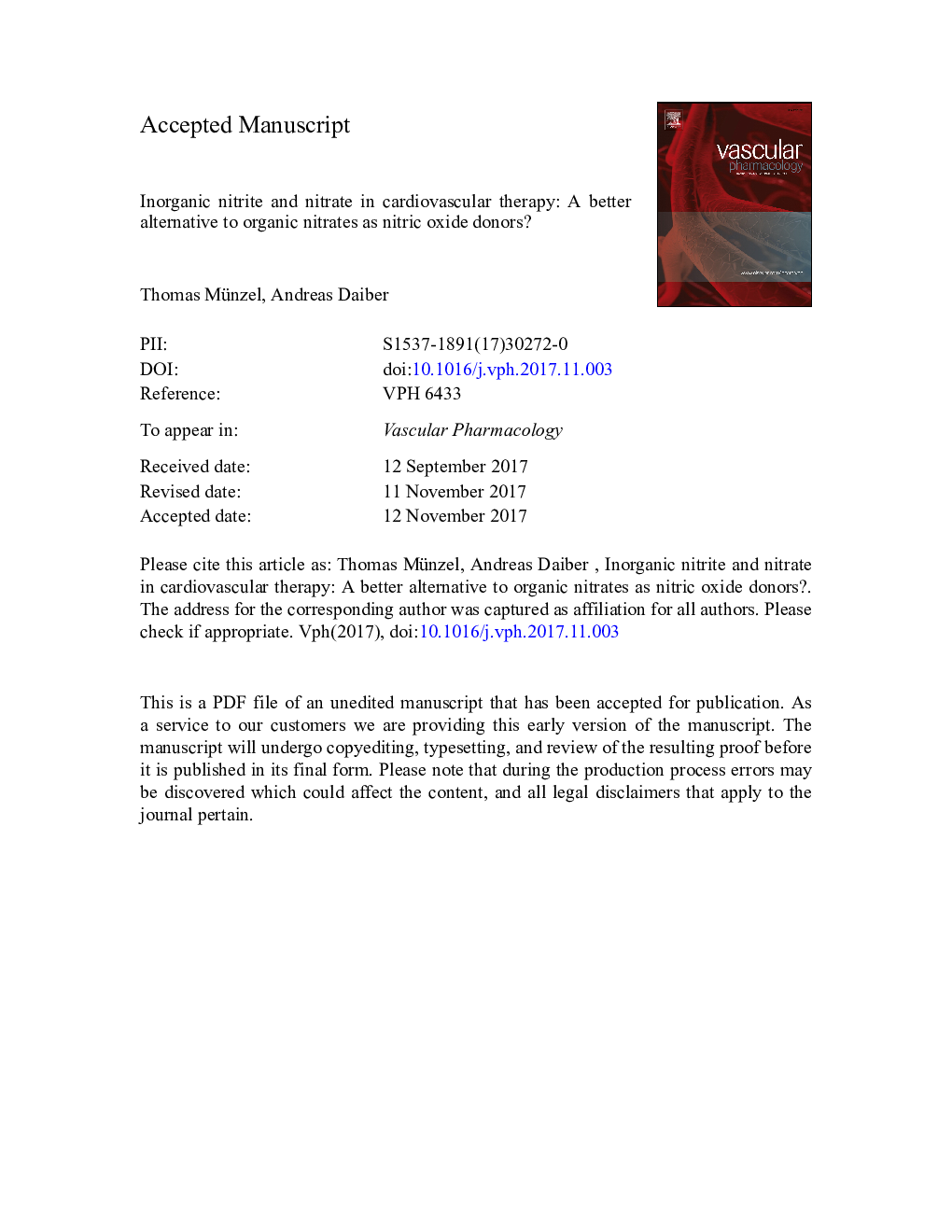| Article ID | Journal | Published Year | Pages | File Type |
|---|---|---|---|---|
| 8540553 | Vascular Pharmacology | 2018 | 32 Pages |
Abstract
In 1867 the organic nitrite, amyl nitrite, was introduced as a therapeutic agent in the treatment of angina pectoris and was later substituted by the organic nitrate nitroglycerin (NTG). Despite having a highly potent vasodilator capacity in veins > coronary arteries > arterioles, the vasodilator effects NTG are rapidly attenuated by the development of nitrate tolerance. We and others established that NTG treatment stimulates the production of reactive oxygen species such as superoxide and peroxynitrite with subsequent marked attenuation of the NTG vasodilator potency. The nitrite anion (NO2â) has more recently been characterized to possess novel pharmacotherapeutic actions such as modulation of vasodilation under hypoxic conditions, thereby providing protection in ischemia-reperfusion injury. Administration of NO2â/NO3â has also been shown to improve myocardial function in heart failure and to lower blood pressure. Despite these positive aspects there is still a great need to study inorganic nitrate and nitrite therapy in various cardiovascular diseases in prospective outcome directed studies. In case being successful, this kind of therapy would indeed represent a cheap, therefore affordable, effective cardiovascular therapy without major side effects as observed in response to therapy with organic nitrates.
Related Topics
Health Sciences
Medicine and Dentistry
Cardiology and Cardiovascular Medicine
Authors
Thomas Münzel, Andreas Daiber,
